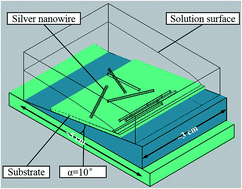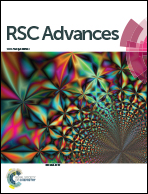Anisotropic optical properties of large-scale aligned silver nanowire films via controlled coffee ring effects
Abstract
Thin films with one-dimensional nanostructures and unique physical properties are potential candidates for next-generation high-performance electronic, optoelectronic, and electromechanical systems. Here we report that large-scale oriented silver nanowire films can be prepared by controlling the coffee-ring effect through tilting the substrates during the film deposition. The anisotropic optical properties of the orientated silver nanowire film are researched here. Surface enhanced Raman scattering (SERS) spectra were recorded from Rhodamine 6G adsorbed on the silver nanowire films. The SERS spectra showed striking polarization dependence according to the angle between the long axes of the nanowires and the light polarization. At the vertical excitation (i.e., light polarization forms a 90° angle to the long axes of the nanowires), the SERS intensity reaches a maximum. Minimum intensities were obtained at a parallel excitation. The three-dimensional finite element method was used to give an in-depth explanation of these properties. Angular resolution fluorescence is also studied. The fluorescence displays an angle-dependence similar to the Raman activities. Optical properties were also investigated through the polarization of reflectivity spectra. The reflectivity is smaller when the incident light is polarized parallel to the orientation direction. As the wavelength increases, the reflectivity increases when the polarization of incident light is perpendicular to the orientation direction. When the wavelength is greater than 870 nm, the amplitude can be up to doubled. Our study indicates that this technique is promising in the production of large-scale orientated silver nanowire films with anisotropic optical properties for high-performance electronic, optoelectronic, and electromechanical systems.


 Please wait while we load your content...
Please wait while we load your content...